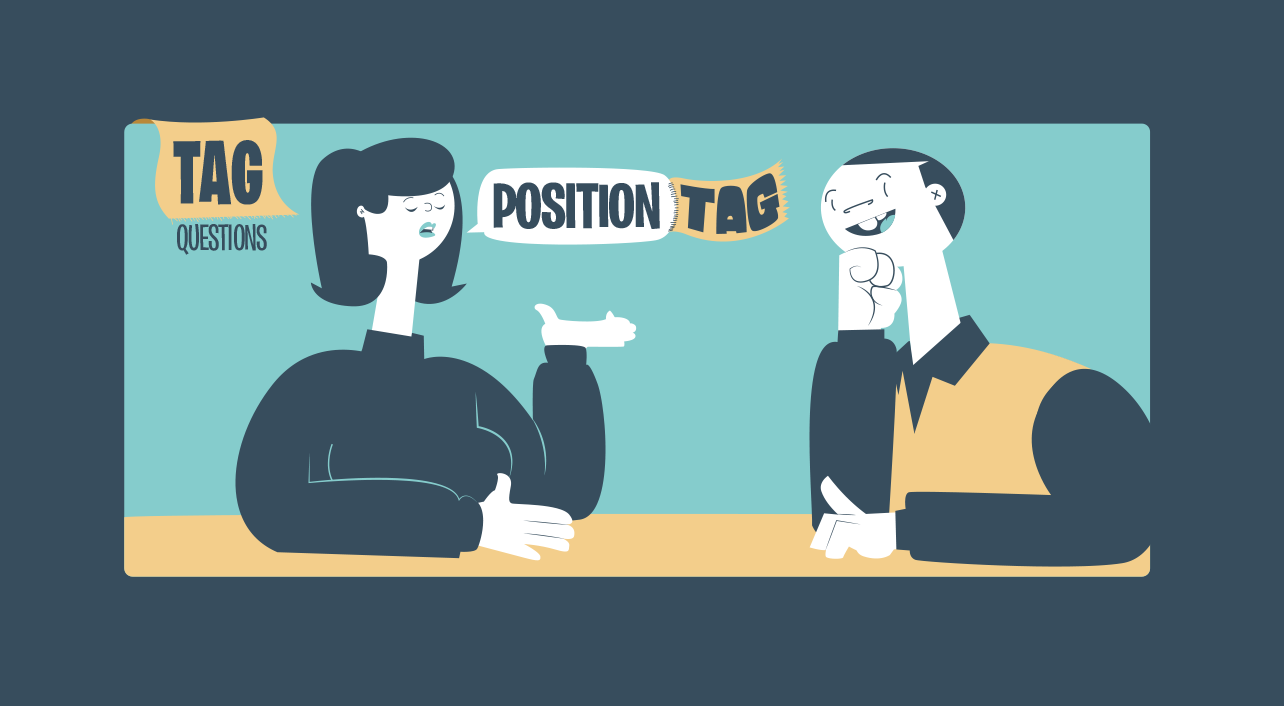- sales
- Blog post
‘Tag questions’ can boost your sales – don’t you think?
Know what “tag questions” are? Maybe you don’t recognize the term. But you’ve undoubtedly heard them used.
It’s when someone states a position, then puts a short “tag” at the end, creating a question designed to get agreement. For example: “Now we’ve got everything we need, don’t we?” or “It’s pretty obvious this is a waste of time, isn’t it?” or “Makes sense, right?”
The conventional wisdom on tag questions is that they’re weak. In many studies, they’ve been shown to diminish the perceived authority of the person using them and make arguments less persuasive. But a study suggests that the earlier research was overlooking a key variable – and that under certain circumstances, tag questions can make you more persuasive with your buyer.
An experiment
Researchers asked a group of college students to evaluate an editorial arguing that comprehensive final exams should be a requirement for graduation. The students were told a college dean had submitted it.
For half of the group, the editorial included tag questions, like “Right?” and “Isn’t it?” and “Don’t you think?” The other half of the group read the same editorial, but without the tag questions. Afterwards, both groups were asked to rate their agreement with the arguments in the editorials.
The editorials that included tag questions were more persuasive: Students who read this version were significantly more likely to agree that final exams should be required before graduation.
Next, the researchers ran the same experiment with another group of students. But the students were told that the editorial had been written by a high-school student, not a college dean. This time, the tag questions made people less likely to agree with the editorial.
Consider the source
The difference between the two experiments, of course, was the source. When the author was perceived as an expert — in this case, the college dean — tag questions made the arguments more persuasive. When the author was seen as someone who probably understood little about the pros and cons of the proposal, tag questions made their arguments seem even weaker.
Probing more deeply, the researchers found that with the high-credibility source, tag questions improved the ability of subjects to process the information in the editorial. In other words, they were better able to distinguish a valid argument from a flawed one.
With a low-credibility source, however, people didn’t really consider the arguments on the merits. And the tag questions made the situation even worse: They were interpreted as indicators of self-doubt or uncertainty – so people were more likely to dismiss everything the author wrote.
A matter of credibility
Here’s what this distinction means for sales:
When you have high credibility, tag questions actually help your buyer think more clearly. They prompt buyers to give careful consideration to what you’re telling them. And because buyers are paying more attention, they’re more likely to be persuaded.
When you lack credibility, however, tag questions backfire. They make buyers less inclined to believe anything you say. The substance of what you’re saying hardly matters. The buyer isn’t listening to any of it.
So you want to use tag questions only after you’ve won your buyer’s trust and confidence. So you probably don’t want to use tag questions during a cold call or in early conversations with a prospect. You also want to avoid them in situations where your credibility is in doubt – for example, when a buyer is angry because your organization dropped the ball, or believes they didn’t get the results you promised. In those situations, tag questions can make you sound whiny and defensive.
Expert voice
But you do want to use tag questions when your buyer sees you as an expert and you’re trying to gain agreement. So you might want to use them during closing, or when you’re seeking to advance a long-standing opportunity to the next step, or when you’re working with a customer who already knows and trusts you.
And when you do use tag questions, be sure you’re speaking in the voice of an expert and trusted advisor. For example:
- “I’m thinking of several strategies we’ve used with other clients to reduce delivery time by 20 percent. That’s what you want to accomplish, right?
- “Based on what you’ve told me, I think we can find a way to reduce your monthly costs by $17,000. That would drop right to your bottom line, wouldn’t it?
- “What I’m hearing is that your current CRM is hard to use, which is slowing down your sales cycle. So a more user-friendly system would pay for itself pretty quickly, wouldn’t you agree?
This blog entry is adapted from the Rapid Learning module “Closing: How ‘tag questions’ can help you seal the deal.” If you’re a Rapid Learning customer, you can watch the video here. If you’re not, but would like to see this video (or any of our other programs), request a demo and we’ll get you access.
The blog post and Rapid Learning video module are based on the following research article: Blankenship, K. & Craig, T. (2997). Language and persuasion: Tag questions as powerless speech or as interpreted in context. Journal of Experimental Social Psychology 43(1), 112-118.

Get a demo of all our training features
Connect with an expert for a one-on-one demonstration of how BTS Total Access can help develop your team.



